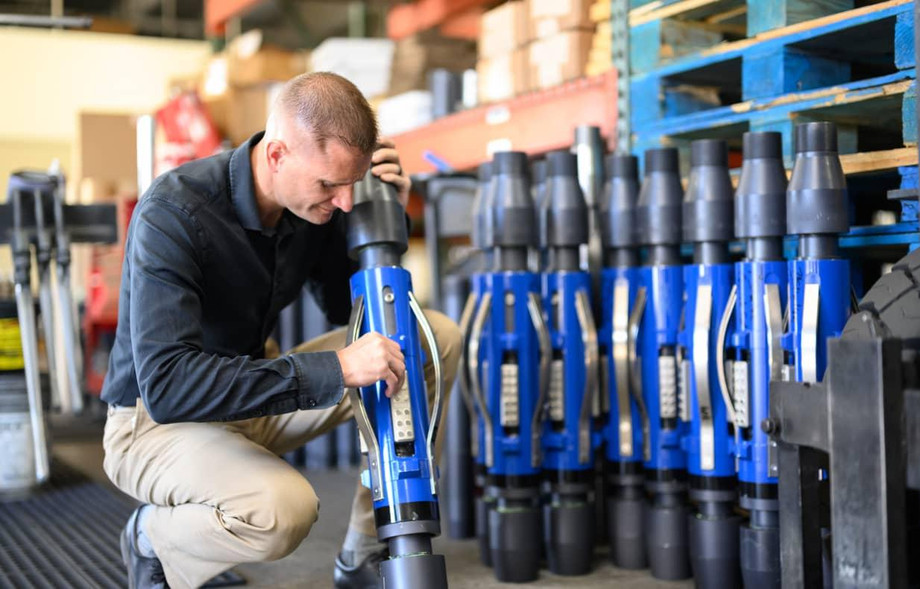Top Benefits of Using Hydraulic Tubing Anchors in Oil & Gas Operations
Hydraulic tubing anchors are crucial components in the oil and gas industry, playing a pivotal role in wellbore stability, preventing tubing movement, and ensuring overall operational efficiency. As oil and gas operations continue to evolve, the use of hydraulic tubing anchors has become increasingly popular due to their ability to handle the challenges of wellbore management and ensure long-term productivity. In this article, we will explore the key benefits of using hydraulic tubing anchors in oil and gas operations and why they are an essential investment for companies looking to improve their wellbore performance.
1. Enhanced Wellbore Stability
One of the primary functions of a hydraulic tubing anchor is to provide stability within the wellbore by preventing tubing movement. During well operations, tubing may be subject to forces such as thermal expansion, contraction, or pressure surges, which can cause the tubing to move vertically or laterally. These movements, if not controlled, can lead to severe operational problems, including wear and tear on equipment, leaks, or even well failure.
A hydraulic tubing anchor effectively locks the tubing in place, minimizing vertical or axial movement. By doing so, it maintains wellbore stability and prevents issues that could disrupt production or damage valuable equipment.
2. Reduced Wear and Tear on Equipment
The movement of tubing in a well can lead to wear and tear on the tubing itself, the casing, and other downhole equipment. Over time, this can result in costly repairs, maintenance, or even the need for complete equipment replacement. By using a hydraulic tubing anchor, companies can significantly reduce the stress placed on their equipment. Anchors help to stabilize the tubing, reducing friction and the impact of pressure surges that can otherwise accelerate wear and tear.
This benefit is particularly important in deep or high-pressure wells, where tubing movement can be more severe. With a hydraulic tubing anchor in place, the risk of equipment failure is minimized, leading to longer equipment lifespan and lower maintenance costs.
3. Improved Operational Efficiency
In oil and gas operations, time is money. Downtime due to equipment failure, tubing movement, or wellbore instability can lead to significant financial losses. By installing hydraulic tubing anchors, companies can improve their overall operational efficiency.
Anchors allow for smoother production processes by ensuring that tubing remains in place, preventing interruptions caused by tubing shifts. Additionally, hydraulic tubing anchors allow operators to optimize their well production without the constant need to monitor or adjust tubing positioning. This means more efficient and reliable operations, leading to increased productivity.
4. Prevention of Tubing Buckling
Tubing buckling is a common issue in oil and gas wells, especially in high-pressure or high-temperature environments. When tubing is not properly anchored, it can buckle under the strain of internal pressures, leading to decreased well performance and potential equipment damage. Hydraulic tubing anchors prevent this by securely holding the tubing in place, even in challenging conditions.
By preventing tubing buckling, anchors help to ensure that production rates remain stable and that the integrity of the wellbore is maintained. This reduces the risk of downtime and ensures that wells continue to operate efficiently, even under extreme conditions.
5. Cost Savings
Hydraulic tubing anchors are a cost-effective solution for oil and gas companies looking to optimize their well operations. While the initial investment in a hydraulic tubing anchor may seem significant, the long-term cost savings make it a worthwhile investment.
By preventing tubing movement, buckling, and equipment wear, companies can avoid costly repairs, replacements, and downtime. Additionally, the improved operational efficiency provided by hydraulic tubing anchors allows companies to maximize production, increasing their overall profitability. When considering the potential financial losses associated with tubing failure or well shutdowns, the cost savings of using a hydraulic tubing anchor become even more apparent.
6. Increased Safety
Safety is a top priority in oil and gas operations, and hydraulic tubing anchors play an important role in maintaining a safe working environment. By preventing tubing movement and ensuring wellbore stability, hydraulic tubing anchors reduce the risk of accidents or equipment failures that could harm personnel or cause environmental damage.
Well-maintained and stabilized wells are less likely to experience blowouts, leaks, or other hazardous situations. Hydraulic tubing anchors contribute to a safer working environment by keeping the wellbore under control and reducing the likelihood of unpredictable or dangerous events.
7. Versatility and Adaptability
Hydraulic tubing anchors are highly versatile tools that can be used in various types of wells, including vertical, horizontal, and directional wells. They are adaptable to different well conditions, including high-pressure and high-temperature environments, making them a flexible solution for a wide range of oil and gas operations.
Whether a well is experiencing significant pressure fluctuations, temperature changes, or is being drilled in a complex formation, hydraulic tubing anchors provide a reliable solution for maintaining well integrity. This versatility makes them an essential tool for modern oil and gas operations.
Conclusion
In conclusion, hydraulic tubing anchors offer numerous benefits for oil and gas companies, including enhanced wellbore stability, reduced equipment wear, improved operational efficiency, and cost savings. They play a crucial role in preventing tubing movement, buckling, and ensuring the overall safety and productivity of well operations.
If you're considering investing in hydraulic tubing anchors for your oil and gas operation, visit https://www.techtac.com/tag/hydraulic-tubing-anchor to learn more about the latest options available.




Comments
Post a Comment